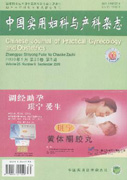With the implementation of the two-child policy and the wide application of hysteroscopy and laparoscopy,pregnancy of scarred uterus women is increasing year by year,and most patients still choose cesarean section.Complications of cesarean section has also increased.It is an important task for obstetricians to master the timing and mode of termination of pregnancy and reduce complications.The authors make a comprehensive analysis of the timing and complications of cesarean section for the second pregnancy of scarred uterus.

